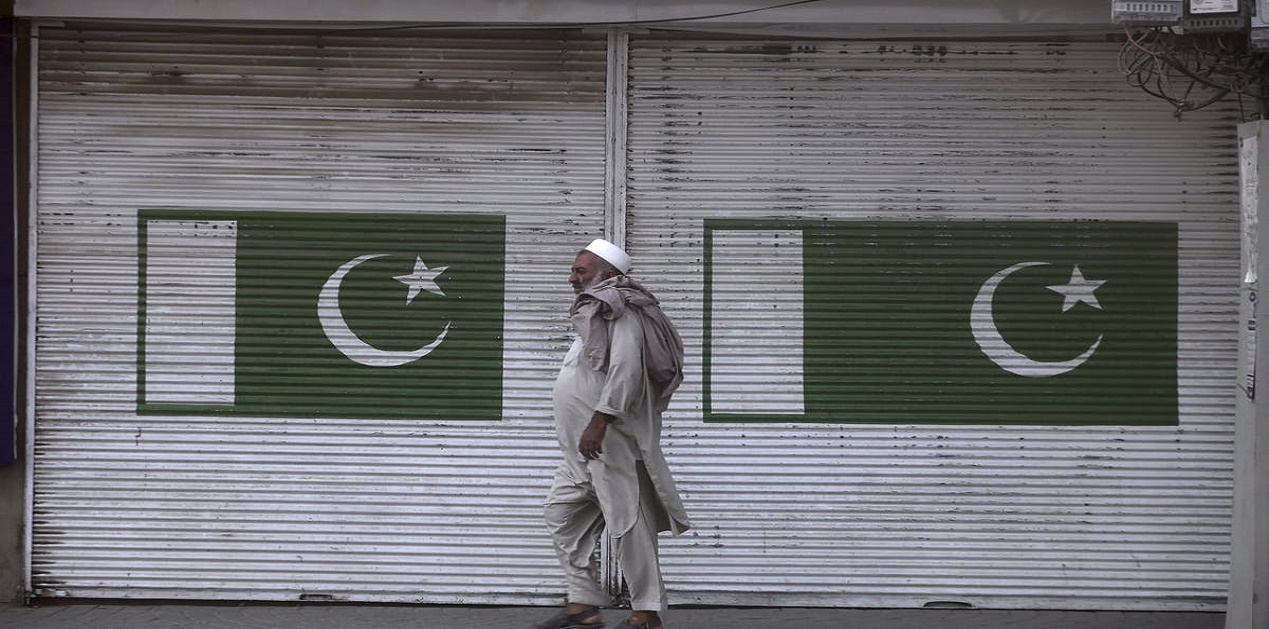2020 was an unpredictable year. It was a year of everything and nothing! Covid-19 crisis turned the world upside down. There was a strange paranoia that gripped the world. It was catastrophic and exhausting, unsettling and unimaginable. However, for Pakistan the year brought new challenges as the country lurched on from one crisis to another. Covid-19 revealed the preexisting cleavages and exposed the cracks and fissures in Prime Minister’s Imran Khan’s government. From economic crisis to the enraged opposition protests, appalling human rights violations, the government faced resounding hostility for poor administration and capability to handle the growing public crises. We see this internal political strife, exacerbating poor socio-economic growth, and completely messy policy making made it even tougher for Pakistan. Hence, it is pertinent to analyse the complexities of the tumultuous year and look at the uncertain road ahead for Pakistan.
The most defining feature of the 2020 was the rapid spread of Covid-19 in Pakistan. It became one of the first few countries to report positive cases of the viral infection. The raging pandemic created a situation of chaos and instability. We see, as the cases started to increase the Imran Khan led Pakistan Tehreek-e-Insaaf (PTI) government was criticized for its inability to formulate a cogent policy. The crises exposed the policy divide between federal and provincial governments. It also exposed the cracks in the already fractured society as a national health emergency like Covid-19 did not deter the Pakistani government to discriminate against the minorities. In fact, Covid-19 crisis further exacerbated the religious inequalities in Pakistan. From calling coronavirus as a “Shia virus” and announcing that Hazara areas which are Shia dominated will be secluded from the rest of the Quetta city to denying food rations to Christians and Hindu religious groups, the pandemic revealed how Pakistan dehumanizes its minorities.
The havoc wrought by Covid-19 was felt the most by Pakistan’s battered and fragile economy. The GDP growth rate for fiscal year 2019–20 was ¬–0.4 per cent — the first time it fell negative in seven decades1. Per capita income fell from US$ 1625 to US$ 13252. Further, hyperinflation and unprecedented power and energy price hikes, coupled with a sharp decline in income among the middle, lower middle and working classes, brought about extraordinary hardships for the ordinary people. Though International financial institutions provided some temporary relief in form of waivers and loans, Pakistan’s economy remained in dire straits.
While Covid-19 pandemic loomed large in the background, Pakistan stumbled upon another crisis, which was the worst locust attack in nearly three decades. These insect swarms decimated the entire harvests in the country’s agricultural heartlands and sent food process soaring. This infestation forced the government to announce a national emergency so as to eradicate the desert locusts3.
Amidst the chaos and disorder there was public criticism of Imran Khan’s poor handling of crisis and governance. In fact, the government’s actions led to the rise of a unified opposition force that was never seen before in the country’s history- the Pakistan Democratic movement (PDM). In this historical move, 11 major opposition parties came together to form the PDM, with a common objective- to bring down the Imran Khan’s PTI government and reinstate democracy in the country. This movement, which included large rallies, was indeed extraordinary as this was for the first time that major opposition parties and the public solidified as a unit against the Pakistani establishment, which has been running the country since its independence. Though the fate of the motley opposition alliance hangs in the balance4, the future of Imran Khan’s is at stake, as he still has not weathered the storm.
While Pakistan's domestic politics remained marred with controversies the foreign policy of the country was also in a major flux. India-Pakistan relations were at the lowest ebb. Pakistan repeated attempts to raise Kashmir issue in International forums and implicate Indians for terrorism related activities in Pakistan by indulging in dossier politics failed to gain any traction. Not just relationship with India saw further deterioration but regional developments and realignment further compounded Pakistan’s challenges5. There was faltering relations with old allies such as Saudi Arabia as it refused to grant Pakistan’s request for a special meeting of the Council of Foreign Ministers of the Organization of Islamic Cooperation (OIC) on Kashmir6. The relationship suffered significantly, as Pakistan’s Foreign Minister Shah Mehmood Qureshi issued a critical statement on OIC’s inaction on the Kashmir issue7. On the other hand the China Pakistan nexus became stronger especially the traditional military ties, though economic links were pushed to the background.
2020 was indeed a challenging year for Pakistan’s foreign policy and the future looks hazy especially with change of guard in the White House. Pakistan needs to tread carefully and make trade-offs, as under Biden administration Pakistan-US relations will undergo drastic changes especially with regards to Afghanistan.
Pakistan is in a precarious situation. It needs to gear up to face thorny problems on the internal, geopolitical and economic fronts. However, if the year that just passed had a lesson, it was the futility of predictions. But with Pakistan it is quite clear that Imran Khan’s poor governance and his misplaced priorities will make this year even trickier and complicated. Especially on the economic front, Pakistan is teetering on a potential economic disaster. With exports stagnant, inelastic revenue collection, widening fiscal deficit and astronomical external debt, Pakistan’s economy remains in doldrums. How long will Pakistan rely on “friendly countries” and International Financial institutions? How long will it keep its people under draconian policies and shams? Lastly, with Financial Action Task Force (FATF) sword still hanging (as Pakistan remains in the grey list) it is going to get tougher for Pakistan. Hence, unless the structural problems of the economy in the form of savings-investment deficit, the expenditure-revenue deficit and the import-export deficit are tackled, Pakistan is headed for a collapse.
References-
- https://www.eastasiaforum.org/2021/01/01/a-forgettable-year-for-pakistans-economy/
- Ibid.
- https://www.dw.com/en/pakistan-declares-national-emergency-over-locust-swarms/a-52224762
- https://www.dawn.com/news/1603835/the-pdms-predicament
- https://tribune.com.pk/story/2278522/pakistans-new-year-foreign-policy-challenges
- https://southasianvoices.org/pakistan-2020-year-in-review/
- Ibid.
(The paper is the author’s individual scholastic articulation. The author certifies that the article/paper is original in content, unpublished and it has not been submitted for publication/web upload elsewhere, and that the facts and figures quoted are duly referenced, as needed, and are believed to be correct). (The paper does not necessarily represent the organisational stance... More >>
Image Source: https://images.theconversation.com/files/285016/original/file-20190721-116562-nqpql.jpg?ixlib=rb-1.1.0&q=45&auto=format&w=1200&h=675.0&fit=crop











Post new comment